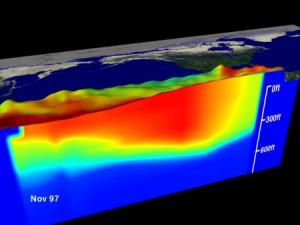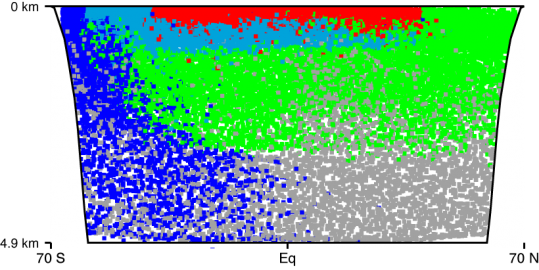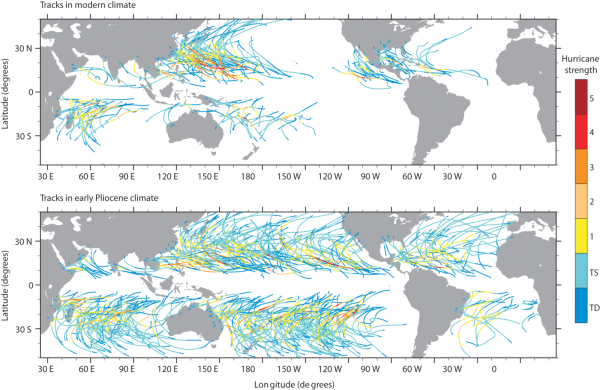I am Professor of Oceanic and Atmospheric Sciences in the Department of Earth and Planetary Sciences of Yale University and a Senior Visiting Scientist at LOCEAN/IPSL, the Sorbonne University. I lead Ocean, Atmosphere and Climate Modeling group. Welcome to my Web page.
My work advances our understanding of ocean, atmospheric, and climate dynamics in the contexts of contemporary global warming and past climate changes. I am particularly interested in oceanic and atmospheric general circulation, ocean-atmosphere interactions, the ocean’s role in climate, and climate variability across a broad range of time scales.
These problems intertwine several disciplines, such as physical oceanography, geophysical fluid dynamics, atmospheric sciences, paleoclimate, and numerical modeling. I use a hierarchy of approaches, including simulations with state-of-the-art oceanic, atmospheric, or climate models (GCMs), advanced theoretical methods, analysis of observations, toy models, and more recently, AI methods. The ultimate goal is to understand the physical processes that control climate dynamics and to improve climate prediction.
Quite often, we have vacancies for Ph.D. studies in our department for qualified candidates interested in pursuing these and other important problems. We also often have openings for postdoctoral positions to work in my group funded by NSF grants or by Postdoctoral Fellowships sponsored by the Department or Yale Institute for Biospheric Studies. Below I describe several quick examples of topics I have been working over the years.
El Nino (past, present and future) and ocean-atmosphere interaction
One of the dramatic examples of climate phenomena that affect climate globally is El Nino-Southern Oscillation. This is a quasi-periodic oscillation that originates in the tropical Pacific due to large-scale ocean-atmosphere interactions. El Nino is its warm phase and La Nina - its cold phase. El Nino involves zonal advection of warm waters from the western equatorial Pacific to the east and a weakening of the atmospheric circulation (of the Walker cell) that happen every 3-5 years.

Can we accurately model and predict El Nino more than a few months in advance? Will a strong El Nino, similar to the event of 1997/1998, occur any time soon? Can Earth’s climate, with future global warming, slide to permanent El Nino-like conditions in the tropics?
Atlantic meridional overturning circulation (AMOC) and rapid climate changes
Can climate change abruptly (Barreiro et al 2008), say, on decadal timescales? This happened on multiple occasions in the past and was related to reorganizations of the ocean meridional overturning circulation (MOC) that resulted in temperature shifts of the order of 10oC in the Northern Atlantic. Can such a rapid climate transition happen with future global warming? And if it does, will the abrupt climate change originate in high latitudes (say, in the northern Atlantic), or in low latitudes (in the tropical Pacific, for example)? What will happen with ocean circulation in global warming? Will the Gulf Stream disappear and parts of Europe get into a deep freeze? The answer to this latter question is a NO, and if somebody claims to the contrary he or she supports a myth that has no scientific basis. Nevertheless, changes in the strength of ocean overturning circulation are likely, which may still have an important effect on climate.
Ocean circulation and thermal structure
A related question is what controls the ocean thermal structure of and its overturning circulation. It has been recognized for some time that the deep ocean is very cold (just barely above freezing). This is a consequence of two factors: (i) water masses in the ocean abyss originate in high latitudes when surface waters sink and (ii) there is very little vertical mixing in the ocean.

We have employed a Lagrangian ocean model (LOM) in an idealized setting to study the relative contribution of the two processes to the ocean thermal structure. The LOM computes actual trajectories of water parcels as they travel through the ocean and can be run in a fully adiabatic regime (no mixing whatsoever with surrounding waters after sinking). The figure above shows different water masses as simulated by this model (Haertel and Fedorov 2011).
Tropical cyclones and global climate

We have computed synthetic tracks of tropical cyclones in different climate states (modern, the Pliocene warm period) and studied their potential contribution to global climate. We published a paper on this subject in Nature (Fedorov et al 2010). More recently we studied the effect of anthropogenic climate change on tropical cyclones (Studholme at al. 2022).
Other topics
Please see the full list of my publications.
